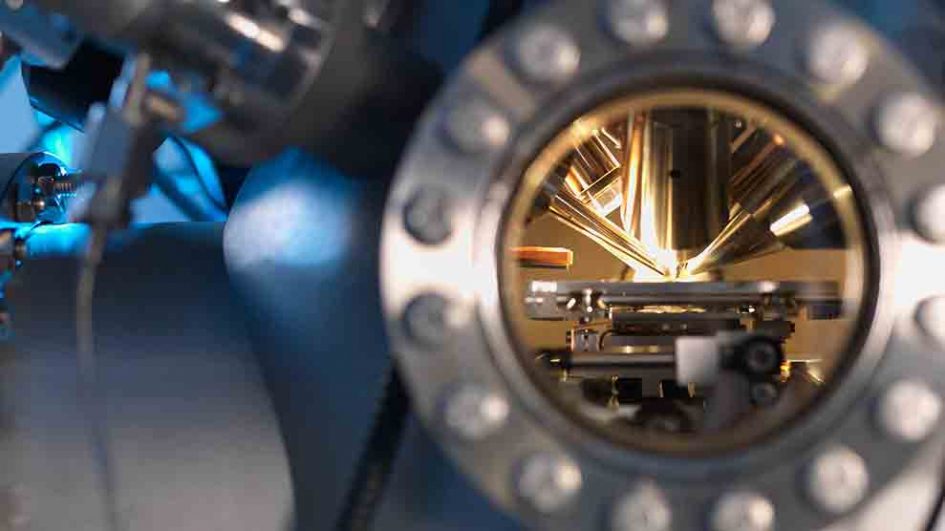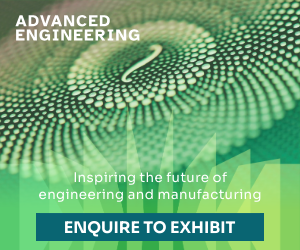- NPL helps company enhance novel temperature mapping device for the evaluation and design of mission-critical components such as gas turbines or internal combustion engines
- NPL scientists together with Sensor Coating Systems (SCS) developed a standard light source to validate and homogenise the SCS’s measurement instruments
Scientists at the National Physical Laboratory (NPL), in collaboration with Sensor Coating Systems (SCS) have successfully developed a standard light source (SLS) for verification of a temperature mapping device.
Sensor Coating Systems, looking to reduce the temperature measurement uncertainties of their thermal history technology, approached NPL for help. Their technology consists of applying a luminescent coating to a component, exposing it, under normal operational conditions, to its maximum temperature, and determining the optical properties of the coating following exposure. With a suitable calibration, the temperature of exposure can be determined utilising the thermal memory of the coating – i.e. offline thermometry. The measurement capability can be used from 150 °C to 1600 °C, making the technology useful for the evaluation and design of mission-critical components in harsh environments. The development of these tools will enable improved measurements on gas turbine parts for power generations, jet engines or for automotive parts. Consequently, assisting in the reduction of costs, improving efficiency and lowering emissions.
Scientists at NPL and at SCS have developed a portable standard light source (SLS) based on a high-power LED, which can be configured to simulate precisely and reproducibly, the light emitted by SCS’s coating. NPL are currently developing novel phosphorescent thermometry solutions for online temperature measurements in harsh environments, and as a consequence of this, we are uniquely placed to understand SCS’s technical challenges and quickly provide a solution.
Making use of the SLS has given SCS a robust mechanism to validate and homogenise different instruments without the need to measure an actual luminescent coating and will ultimately create a mechanism for product standardisation.
Dr Gavin Sutton, Principal Research Scientist, NPL said: “Working in partnership with SCS through the Analysis for Innovators (A4i) programme has provided a mechanism to greatly enhance the impact of the collaboration in a relatively short period of time. By bringing to bear NPL’s prior experience in online phosphor thermometry, we were able to quickly and effectively understand SCS’s requirements and find the most suitable solution.”
Dr Jörg Feist, Managing Director, Sensor Coating Systems said: “We found the collaboration with NPL engineers and scientists extremely satisfying throughout the entire project. The work was intense, but very fruitful. Both sides brought their specialists together and generated a truly new instrument which will enable the calibration and standardisation of life time decay sources around the world. As a direct outcome of the project SCS decided to embark into an even more challenging project with the team at NPL in 2020.”
About NPL
NPL is the UK’s National Metrology Institute, providing the measurement capability that underpins the UK’s prosperity and quality of life.
From new antibiotics to tackle resistance and more effective cancer treatments, to secure quantum communications and superfast 5G, technological advances must be built on a foundation of reliable measurement to succeed. Building on over a century’s worth of expertise, our science, engineering and technology provides this foundation. We save lives, protect the environment and enable citizens to feel safe and secure, as well as support international trade and commercial innovation. As a national laboratory, our advice is always impartial and independent, meaning consumers, investors, policymakers and entrepreneurs can always rely on the work we do.
Based in Teddington, south-west London, NPL employs over 600 scientists. NPL also has regional bases across the UK, including at the University of Surrey, the University of Strathclyde, the University of Cambridge and the University of Huddersfield’s 3M Buckley Innovation Centre.





